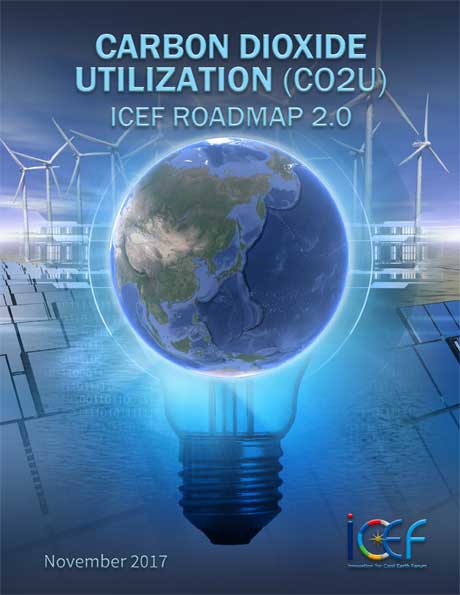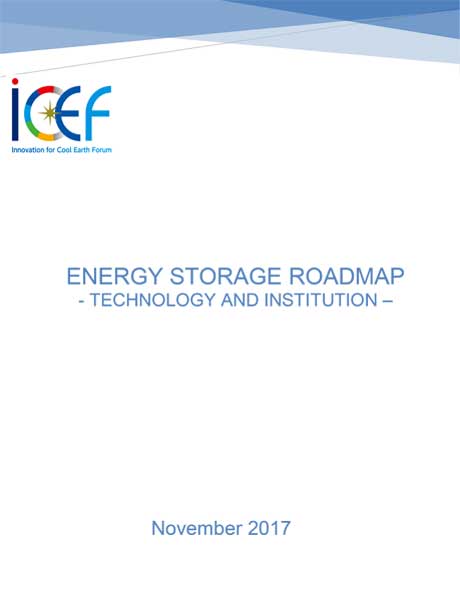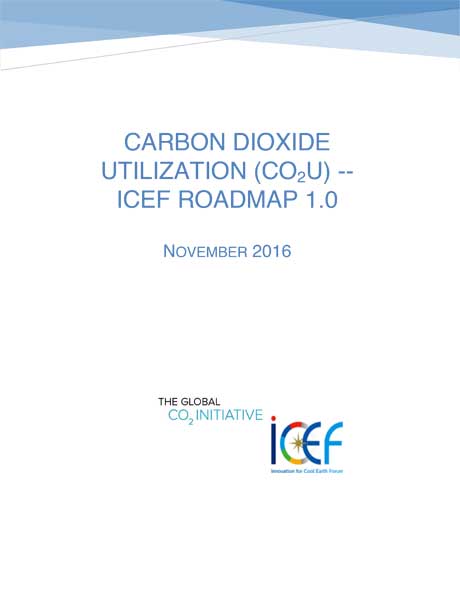ICEF develops roadmaps on how key innovative technologies can contribute to a transition to clean energy. Roadmaps consider industrial, academic and governmental perspectives to identify a realistic, fact-based pathway and meaningfully inform the work of all stakeholders.
ICEF roadmaps are collaborative documents developed from the concurrent sessions in our annual conference and refined by reviews and suggestions from specialists.
Innovation for Cool Earth Forum (ICEF) publishes innovation roadmaps for carbon dioxide utilization and energy storage and other technologies with the potential to contribute significantly to long-term Net Zero Emissions.
A draft of the Biomass Carbon Removal and Storage (BiCRS) Roadmap was released at ICEF 2020.
Public comments on the ICEF 2020 Draft of Roadmap have concluded.
This roadmap explores ways to use biomass to remove CO2 from the atmosphere and store that CO2 underground or in durable products.
We introduce a new term -- biomass carbon removal and storage (BiCRS) – which we believe better describes this topic than the traditional term -- bioenergy with carbon capture and storage (BECCS).
The roadmap explores questions including:
Roughly 10% of global greenhouse gas (GHG) emissions come from the production of heat for industrial processes - more than GHG emissions from cars and planes combined. Decarbonizing industrial heat production will be essential to meeting the goals set forth in the Paris Agreement, including achieving net zero emissions in the second half of this century, yet technological approaches for decarbonizing industrial heat production are far from maturity. This topic has received far less attention than decarbonization of the power, transport and building sectors.
This Roadmap explores the challenge of industrial heat decarbonization. After providing general background, we discuss four technological approaches for providing low-carbon industrial heat: hydrogen; biomass; electrification; and CCUS. We next examine decarbonizing heat production in the cement, iron and steel, and chemical industries. We then turn to policy options and an innovation agenda. We close with findings and recommendations.
The IPCC(*) and many scholars agree that achieving a 2 degree C climate stabilization target will be extremely challenging through mitigation efforts alone and will likely require removal of CO2 from the atmosphere at the scale of many gigatons. This number is daunting, but many approaches have been proposed for Negative Emission Technologies (NETs), including land-use techniques, re- and afforestation, bioenergy with carbon capture and sequestration and direct air capture (DAC). The technological status of DAC is very early-stage, with no significant dedicated research, development and deployment (RD&D) programs and only a handful of pilot-scale facilities currently operating.
*Intergovernmental Panel on Climate Change
This roadmap will explore the portfolio of NETs in under 2 degree C scenarios, DAC technologies and their status, long-term goals for DAC (e.g. economic viability, ensuring net CO2 removal from the use of DAC and CO2 utilization, role of renewable electricity, RD&D targets) and policy support.

This roadmap builds on ICEF’s previous work to fill the gap on the viability of the potentially high-impact CO2U technology, stressing the need for life-cycle analysis and exploring effective policies to promote CO2U.
It focuses on concrete & carbonate materials (near-term market), commodity chemicals (near- and medium- term market) and durable carbon materials (small market today but potential large long-term market).

This study examines the current statuses and timelines of three potentially attractive areas of energy storage that can have a high impact on energy system transformation.
These are: stationary electric energy storage to ensure power system flexibility, mobility electric energy storage as key to the transportation electrification, and stationary thermal energy storage storing renewable or environmental heat.

A recent study found carbon dioxide utilization (CO2U) technologies have the potential to reduce global carbon emissions over 10% by 2030. This study presents a roadmap for the commercialization of carbon dioxide CO2U technologies through 2030 by assessing almost 180 global technology developers.

This presents a ZEB/ZEH roadmap for different climate zones taking into account the neglected factor of humidity in air conditioning, especially in humid areas in Asia where energy demand is set to increase substantially. Four technology categories are proposed with timescales: passive (building envelope), active (equipment), renewable energy integration and energy management.